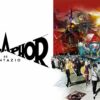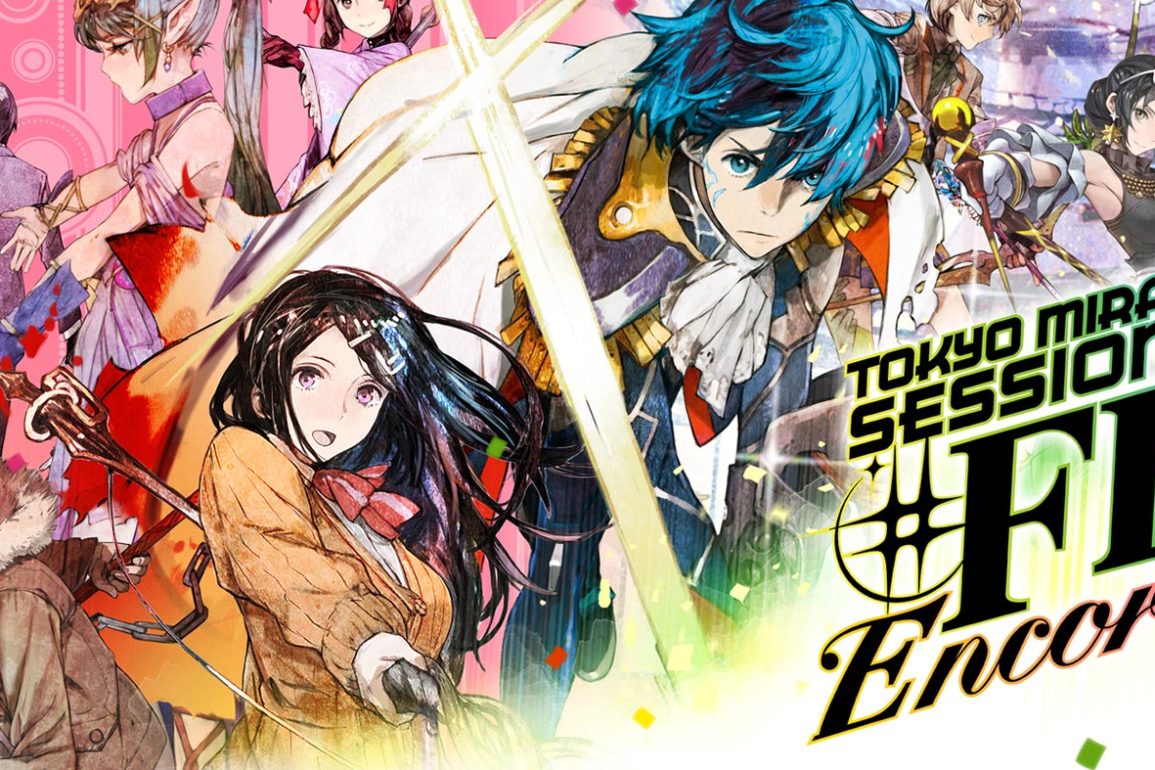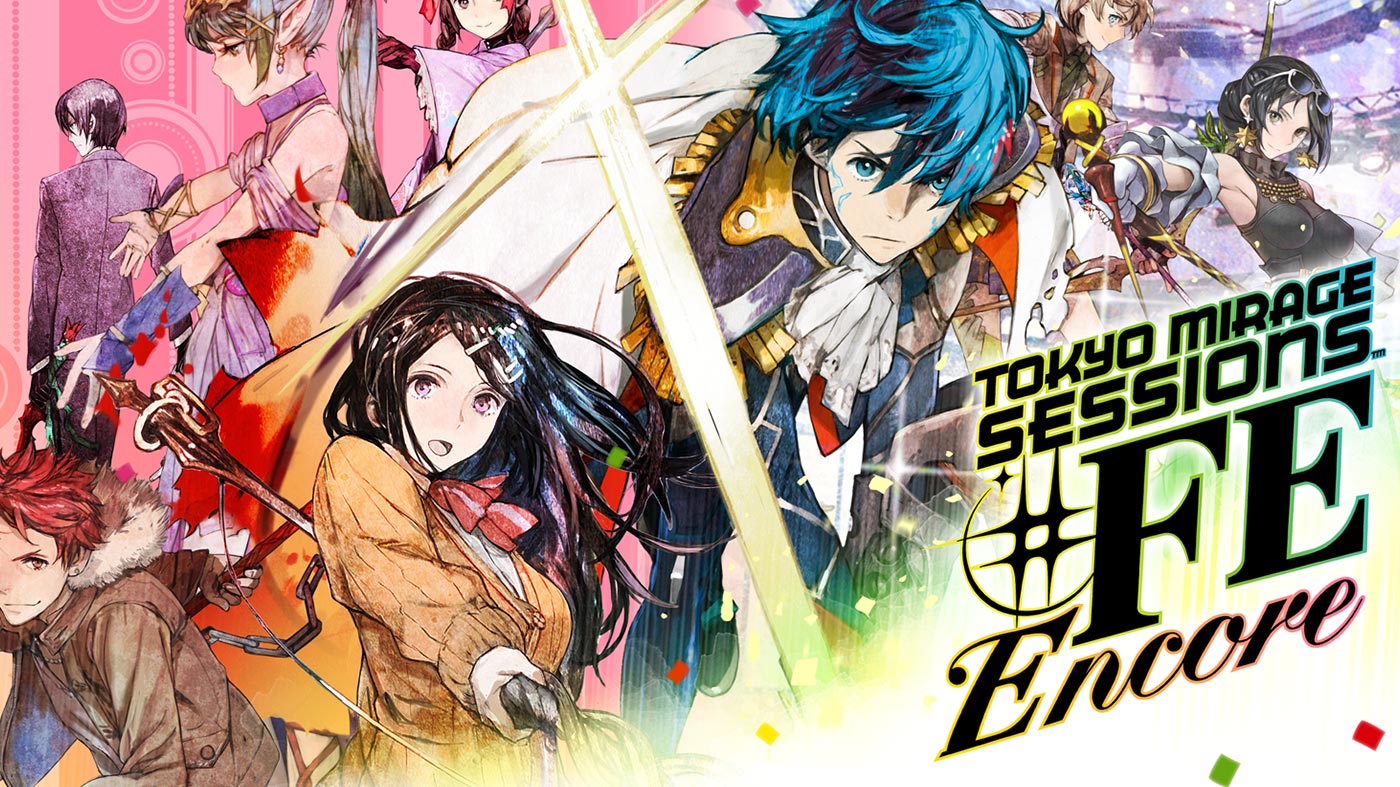When it released for the Wii U years ago, I enjoyed what I played of Tokyo Mirage Sessions. It was by no means the best RPG that I’d ever played, but it was fun, but not without its faults. I felt it was a little bit too niche to get the now omnipresent Switch treatment like other Wii U classics have, and yet here we are. Tokyo Mirage Sessions #FE Encore, while an obvious improvement over the original, has a lot to prove in a post Persona 5 landscape.
Tokyo Mirage Sessions sees you play as Itsuki Aoi, a young boy who becomes involved with the entertainment production company called Fortuna. Fortuna appears to be an entertainment company to the public, but they’re also responsible for fending off beings from another dimension who aim to feed off the creative energy of the people of Tokyo. It’s all plays out like a distended episode of Sailor Moon but does a satisfactory job at setting the scene for the major conflicts as they play out.
Despite this, there are some aspects of Tokyo Mirage Sessions that just feel culturally impenetrable. The whole premise of the game is rooted deep in Japanese culture, which purists will appreciate for the authenticity in which the game is presented. It feels like, in the process of the localisation, that not a lot was touched (beyond the infamous “censorship” debacle earlier this year). It’s by no means a deal-breaker but it is an aspect that will put some players off. None of that tops the main character though -Itsuki himself is borderline catatonic and yet is the character we’re forced to spend the most time with.
While it was originally announced as a collaboration between Shin Megami Tensei and Fire Emblem, Tokyo Mirage Sessions plays a lot more like the former than the latter. Much like Persona, each of the playable characters has a Mirage attached to them to help do combat, and these each takes the guise of a Fire Emblem character from the series storied past. Surprisingly, most of these are deep cuts from the series before it became popular. Beyond that, the Fire Emblem references feel sparse and fleeting until the final chapter. This isn’t necessarily a bad thing, mind you, but worth noting.
The first thing you’ll notice about Tokyo Mirage Sessions is how visually strong it is. It doesn’t do anything ground-breaking with its anime-inspired art direction, opting for a more traditional style of visuals. Similarly, the fantastic use of vivacious pastel colours in every aspect of the art gives Tokyo Mirage Sessions an effervescent and unique personality. Thankfully, such a vibrant style doesn’t hinder the performance of the game, which is great regardless of whether you’re playing docked or handheld. The music videos are similarly well animated, with production values that give the impression they’ve been plucked out of high production TV series.
Much like a typical RPG, you’ll spend most of your time either in a dungeon fighting off the mirage menace or carrying out day to day tasks with your new group of friends at Fortuna. Helping your friends outside of the dungeons will give them new abilities to use and assist you within a battle. These side quests give some good background story to the motivations of your party, but do fall into predictable, stereotypical arcs rather quickly. Thankfully, Tokyo Mirage Sessions doesn’t restrict your activities as Persona does, so it feels a little bit more casually paced.
Battles feel the same too. The turn-based system means that you’ll have time to plan each of your moves, as well as plan which attacks to use in order to initiate a “session”. Sessions are the unique elements of Encore’s battle system, letting your teammates jump in and chain attacks off yours to maximise damage. They’re a useful and fun addition to the combat, but perhaps too useful to the point where they feel a bit shallow as you continue to grow your party.
Sessions are integral to the harder battles in the game, and in the original Wii U version you’d have to sit there while each of the characters carried out their attacks and associated animations. Encore offers a toggle for Quick Sessions, which speeds up the whole process considerably, removing excessive animation to keep the pizazz but shorten the length. It’s a small change that does great work in reducing the ennui of the later battles in the game.
This is perhaps the biggest opportunity that has been squandered with Encore – the opportunity to fix the long and drawn out boss battles that plagued the original. The original Tokyo Mirage Sessions had some pretty great-looking bosses, but it quickly became clear that these battles were more about blind endurance than strategizing and testing your skills. Unfortunately, this trend continues in Encore which is a huge shame as the efforts to improve the flow of the battles are successful but are undermined by the tedious design of the boss battles.
And it’s unfortunate that this tedium carries across into the dungeons. While I appreciate that each dungeon has a discernible theme that ties directly into the story, they’re prone to also falling into the trap of becoming exercises in monotony. Each of the dungeons is designed around a central puzzle or gimmick but also subjects you to relentless trial and error and/or incessant running between two different points to make progress. It’s passable dungeon design, but certainly not Atlus’s best.
In the original Tokyo Mirage Sessions, I got the feeling that if you wanted to unlock every weapon (called “Carnage” in this game) that you’d need to do a bit of grinding to find the materials you need. This much is still true in Encore, but the quick sessions feature means the grind of battles is over in seconds rather than minutes. It’s appreciated that Tokyo Mirage Sessions values your times more in Encore than previously, but it also means you’ll unlock a lot of abilities quicker than you’d expect, which does knock out the balance of the difficulty a bit.
Encore brings with it all the previously released downloadable content, as well as some other little changes that make the experience a whole lot better. For one, the three support characters can now actively participate in your sessions when you do enough for them in the real world. These additions do extend the length of your sessions without breaking the game. There’s also another dungeon and with it another story too, but it feels largely inconsequential and more just a way to deliver the new abilities and costumes to you without meaningfully putting them into the main game. Still, it’s better than nothing.

Purists will be delighted to know that Tokyo Mirage Sessions comes equipped with a Japanese voice track and no English voice over whatsoever. Such a choice makes sense, given the culture the game’s narrative and the premise are anchored to. Unfortunately, however, subtitles aren’t provided for every interaction which does make me feel like I’m missing some of the little details of the relationships between the characters. The soundtrack is fantastic and provides an eclectic mix of synth-pop and city pop.
THE NINTENDO SWITCH VERSION OF THIS GAME WAS PLAYED FOR THE PURPOSE OF THIS REVIEW. DIGITAL REVIEW CODE WAS PROVIDED BY THE PUBLISHER.










